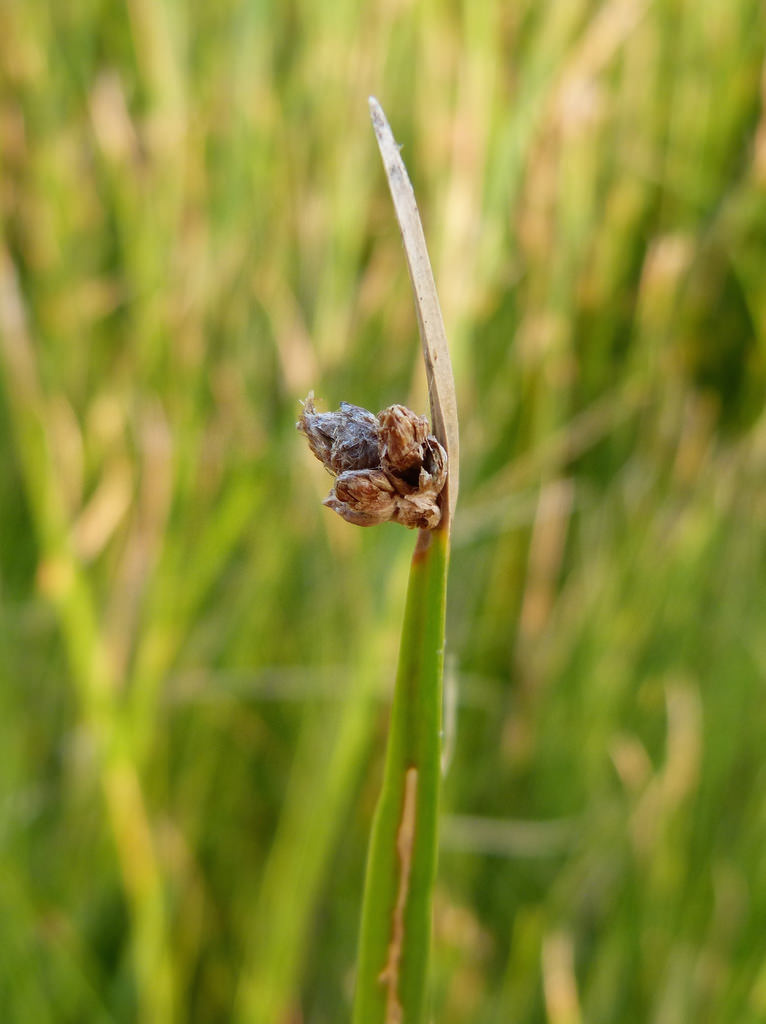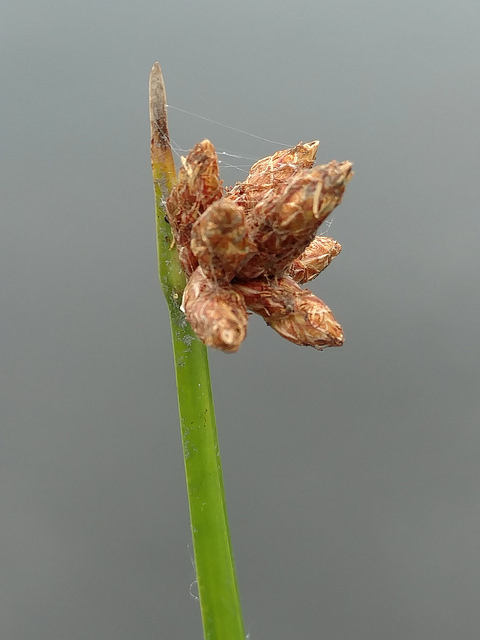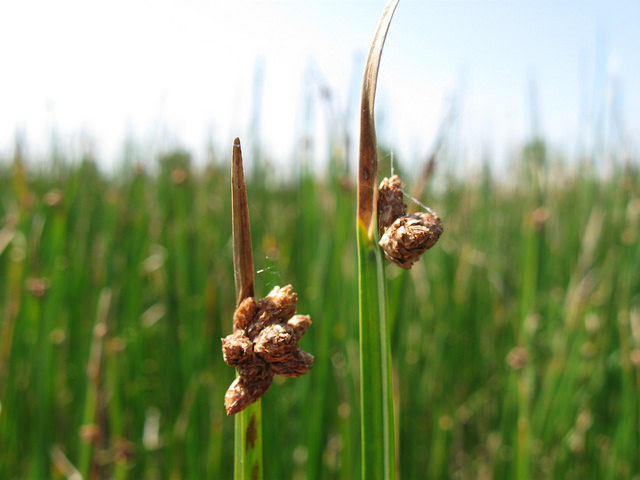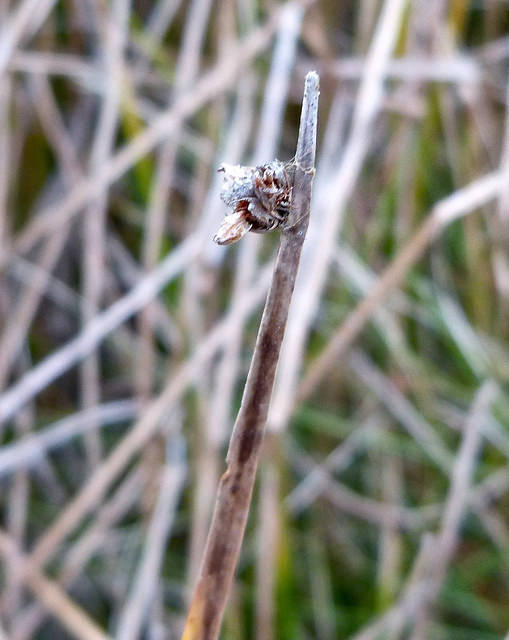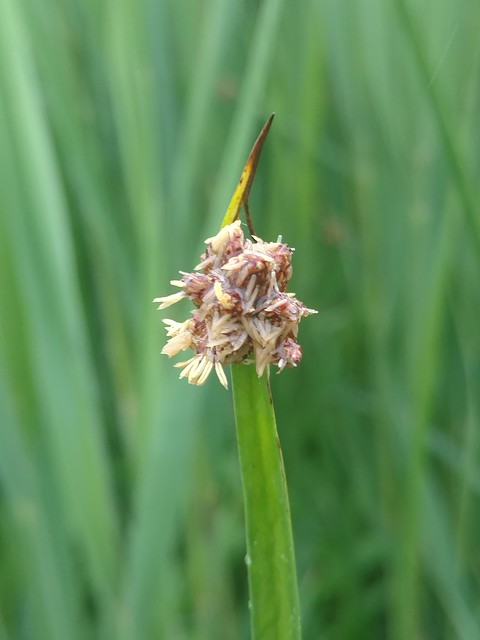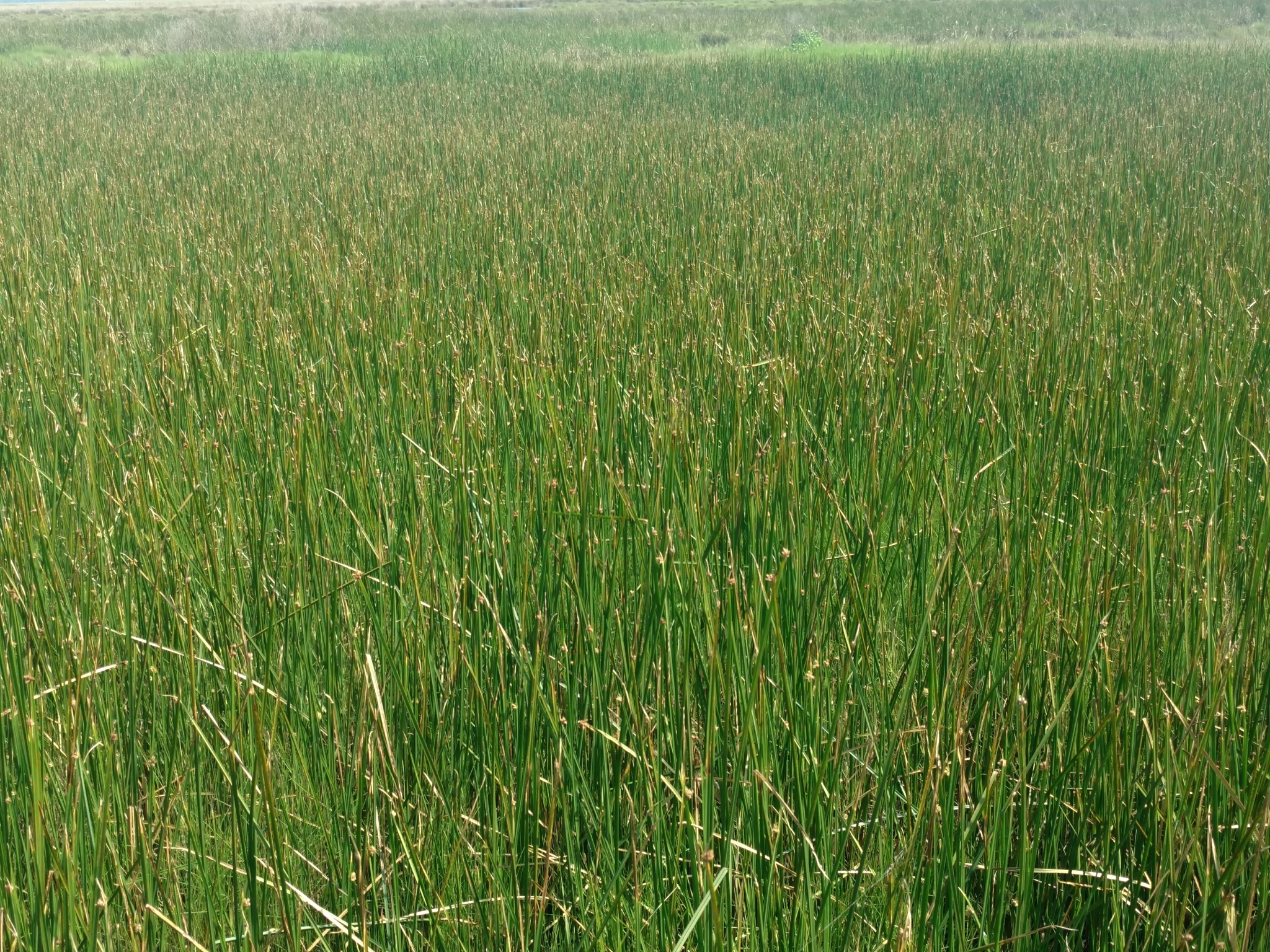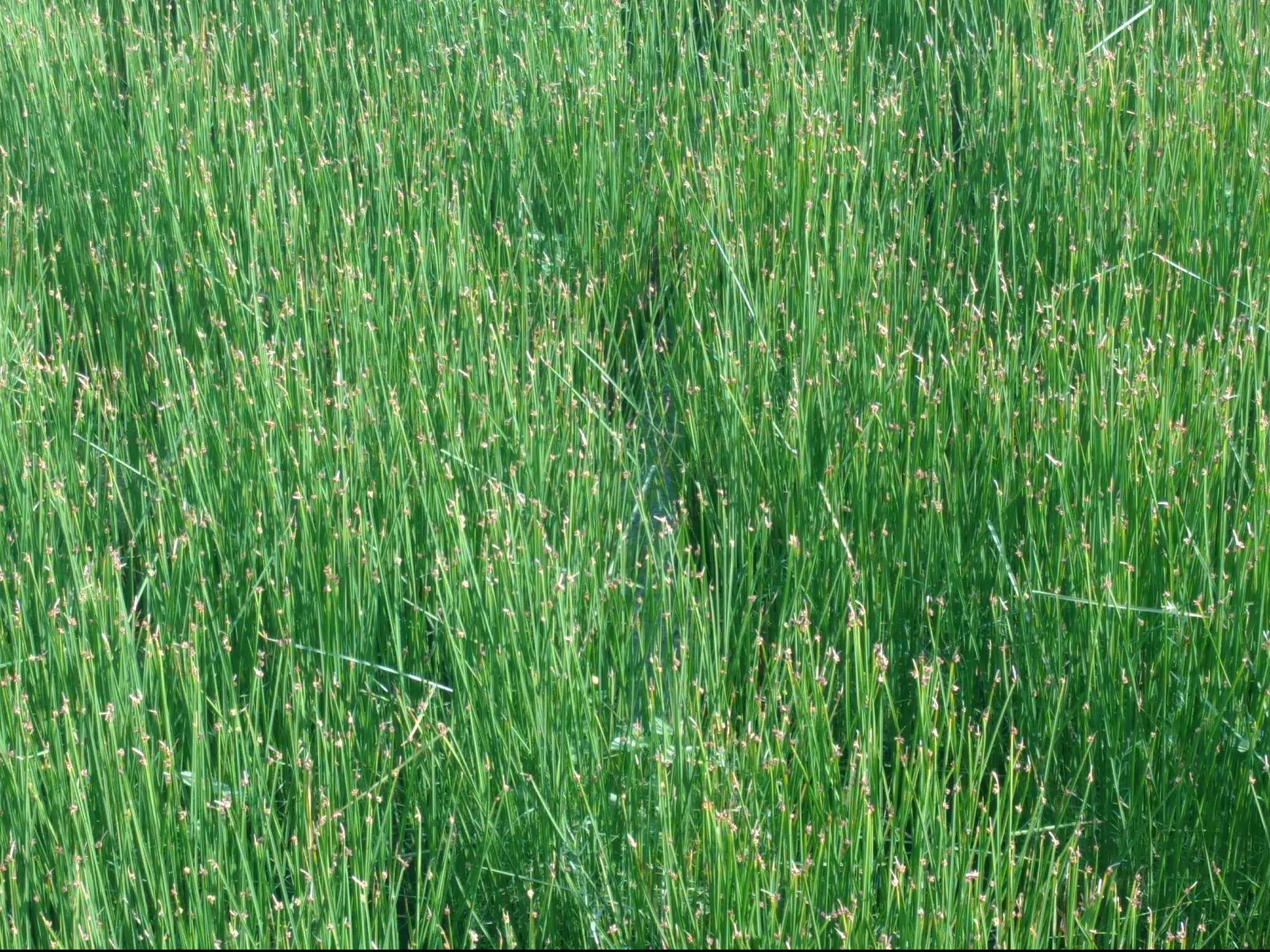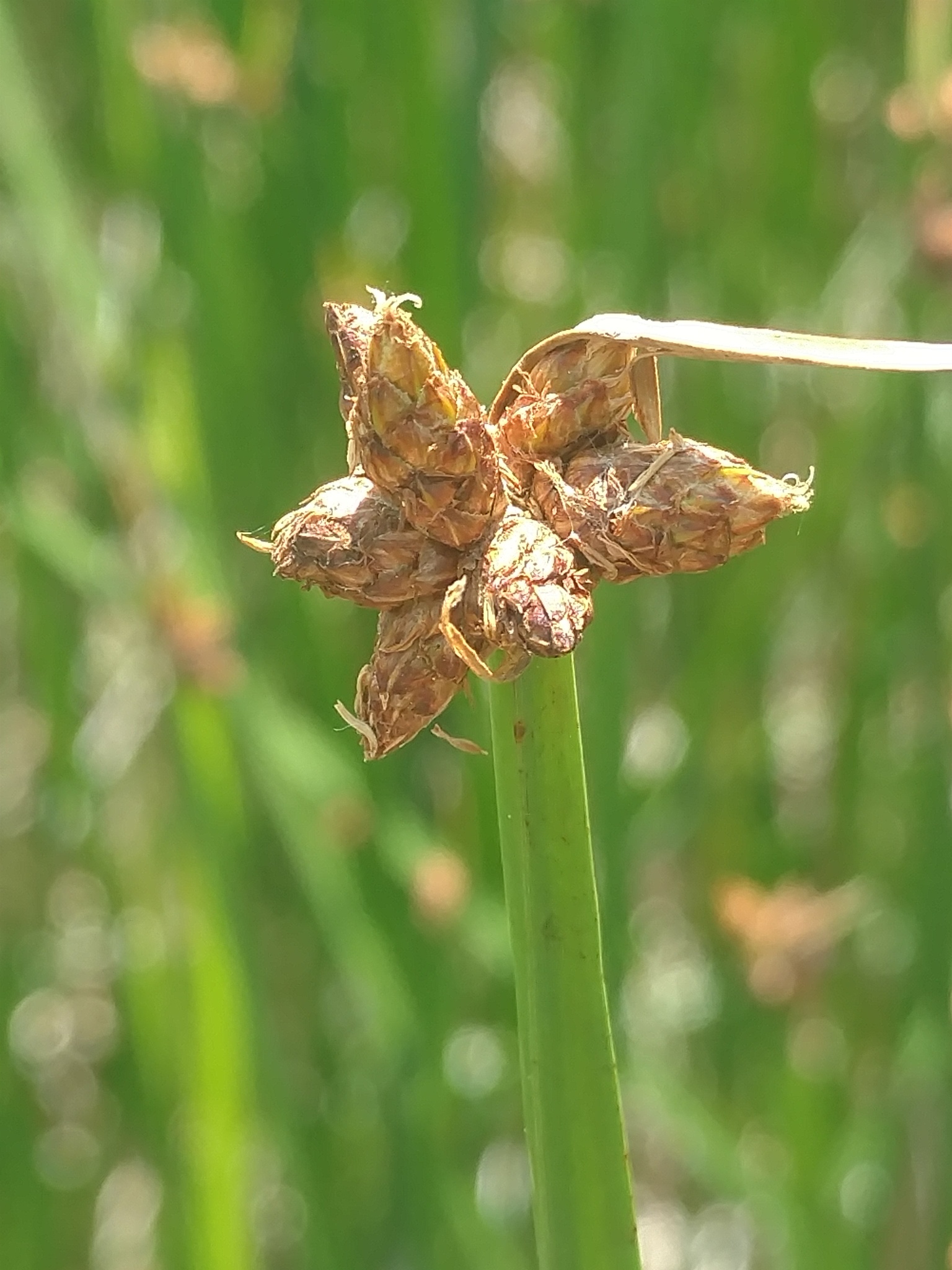Map Snapshot















83 Records
Status
"Native of Eurasia; Florida to Texas, south to South America, west to Pacific, north to Newfoundland" (Reed, 1964).
Seasonality Snapshot
Source: Wikipedia
| Schoenoplectus americanus | |
|---|---|

| |
| Scientific classification | |
| Kingdom: | Plantae |
| Clade: | Tracheophytes |
| Clade: | Angiosperms |
| Clade: | Monocots |
| Clade: | Commelinids |
| Order: | Poales |
| Family: | Cyperaceae |
| Genus: | Schoenoplectus |
| Species: | S. americanus
|
| Binomial name | |
| Schoenoplectus americanus (Pers.) Volkart ex Schinz & R. Keller
| |
| Synonyms | |
|
Scirpus americanus | |
Schoenoplectus americanus (syn. Scirpus americanus) is an American species of flowering plant in the sedge family known by the common names chairmaker's bulrush and Olney's three-square bulrush.
Description
[edit]This perennial herb easily exceeds 2 metres (6+1⁄2 ft) in height. The stiff stems are sharply three-angled and usually very concave between the edges. Each plant has three or fewer leaves which are short and narrow. The inflorescence is a small head of several spikelets which may be brown to bright orange, red, purplish, or pale and translucent. They have hairy edges. The fruit is a brown achene. The plant reproduces sexually by seed and colonies spread via vegetative reproduction, sprouting from the rhizomes.
Distribution and habitat
[edit]It is native to the Americas, where it is known from Alaska to Nova Scotia and all the way into southern South America; it is most common along the East and Gulf Coasts of the United States and in parts of the western states.[1] It grows in many types of coastal and inland wetland habitat, as well as sagebrush, desert scrub, chaparral, and plains.
Ecology
[edit]This plant, particularly the rhizomes, are a food source of muskrat, nutria, and other animals; it is strongly favored by the snow goose in its wintering grounds.[1]
Uses
[edit]Native American groups used this plant for many purposes, including food, basketry, and hatmaking.[2] It is used for revegetation projects in salt marsh habitat in its native range.[1] It is a model organism in the study of salt marsh ecology and its response to climate change (currently global warming).[3]
References
[edit]- ^ a b c US Forest Service Fire Ecology
- ^ Ethnobotany
- ^ Blum, M. J., et al. (2005). Characterization of microsatellite loci in Schoenoplectus americanus (Cyperaceae). Molecular Ecology Notes 5:3 661-3.
External links
[edit]

